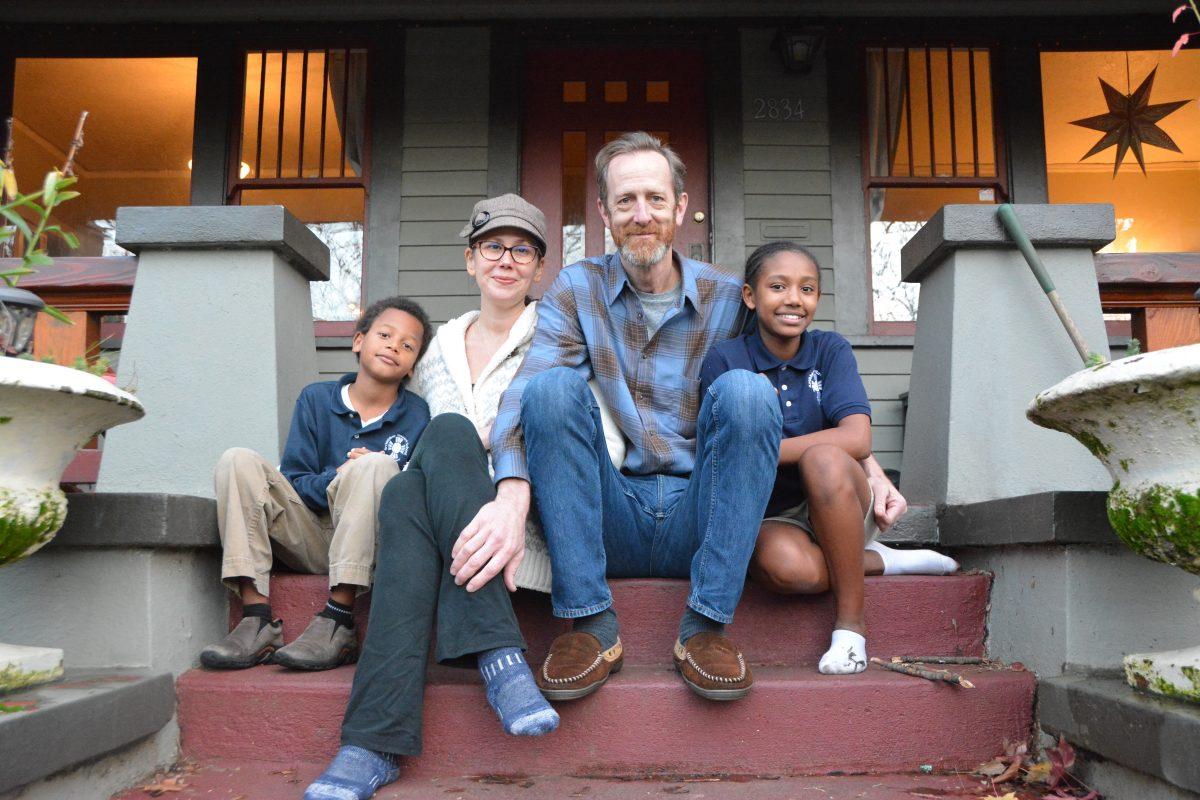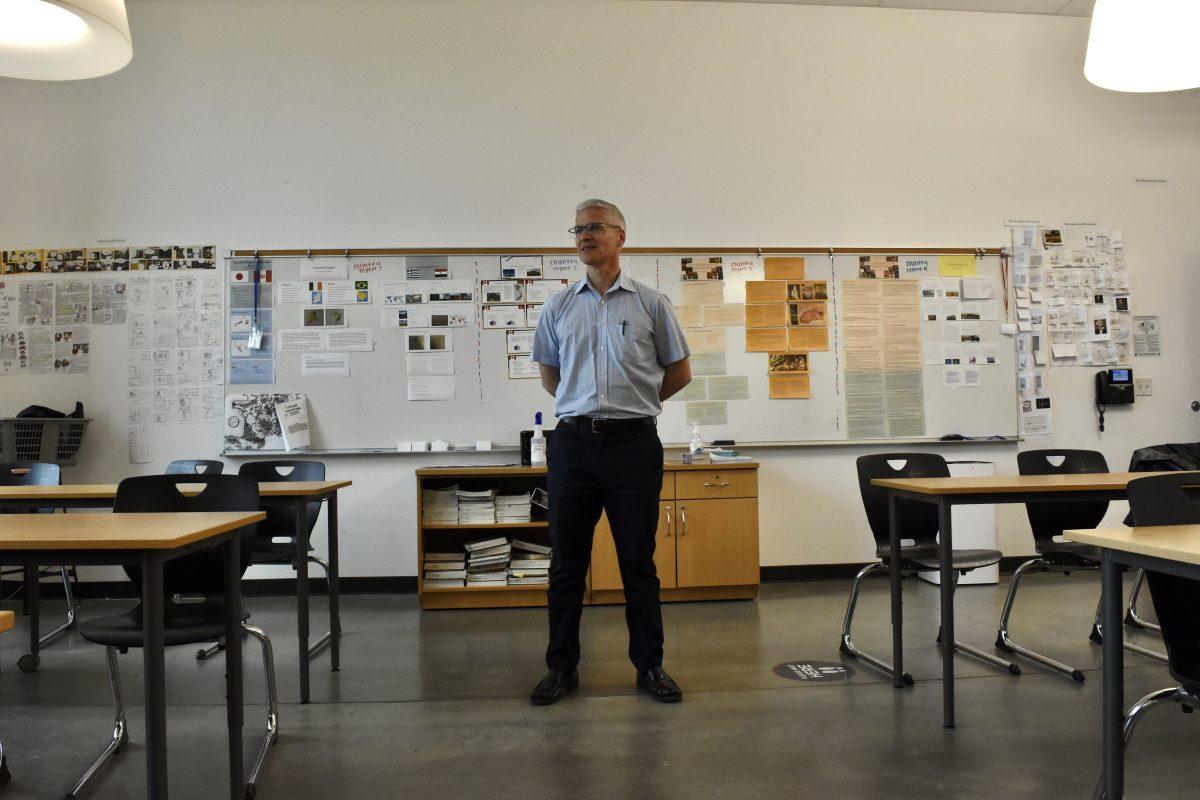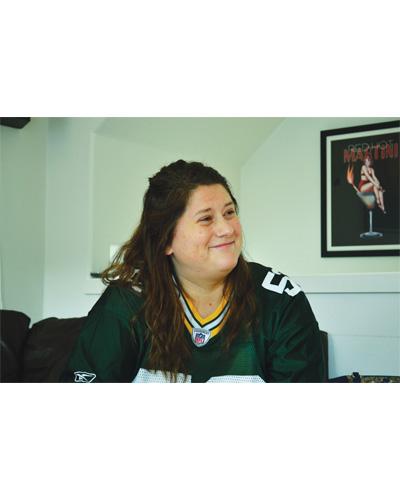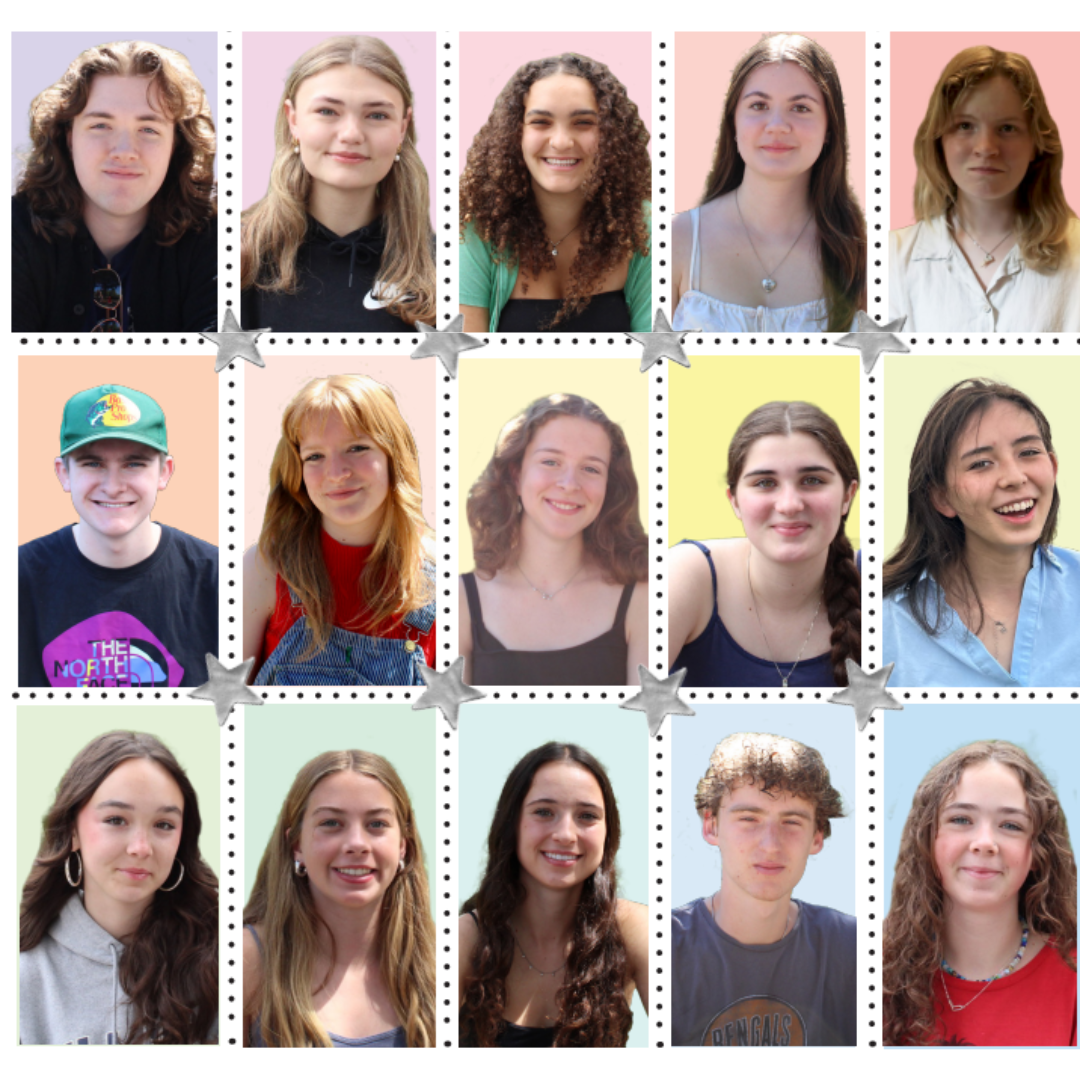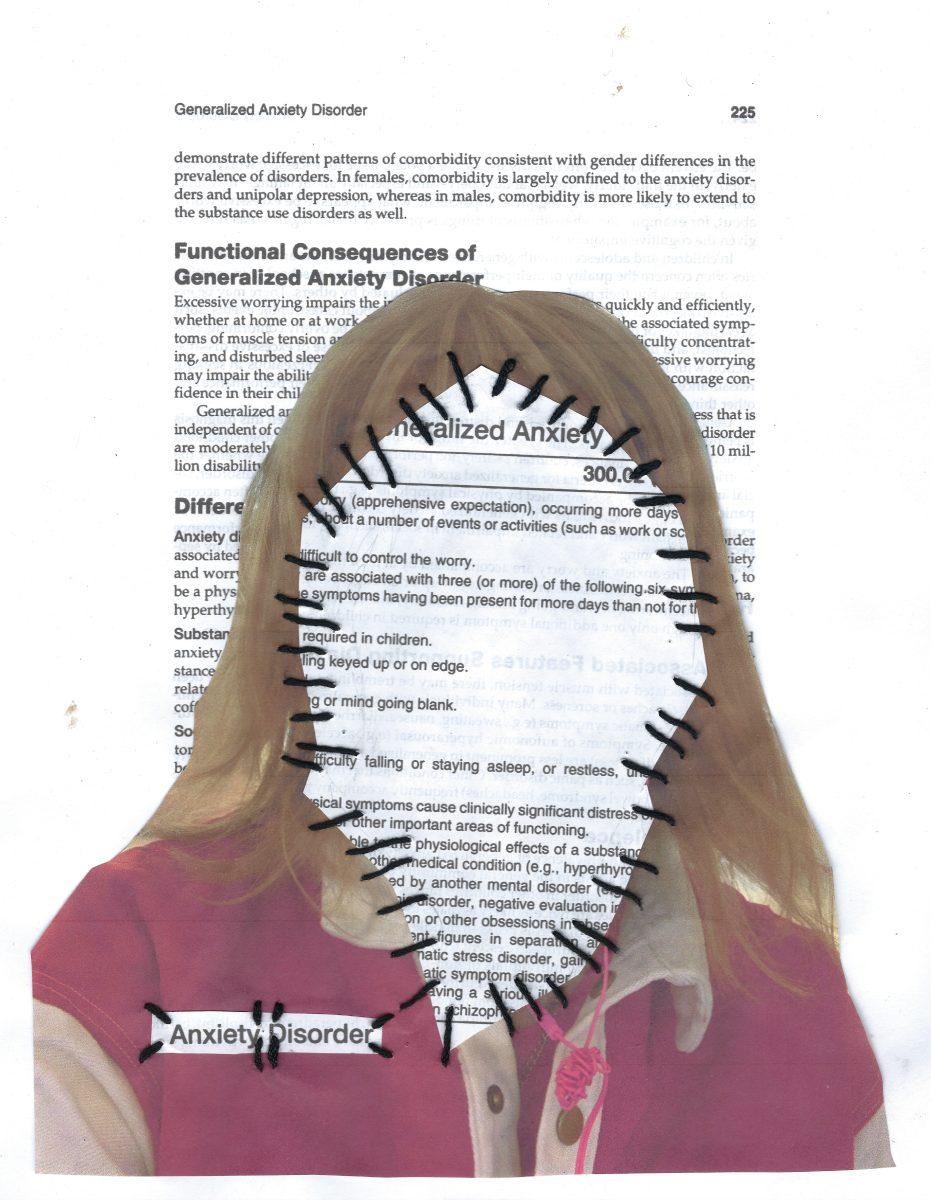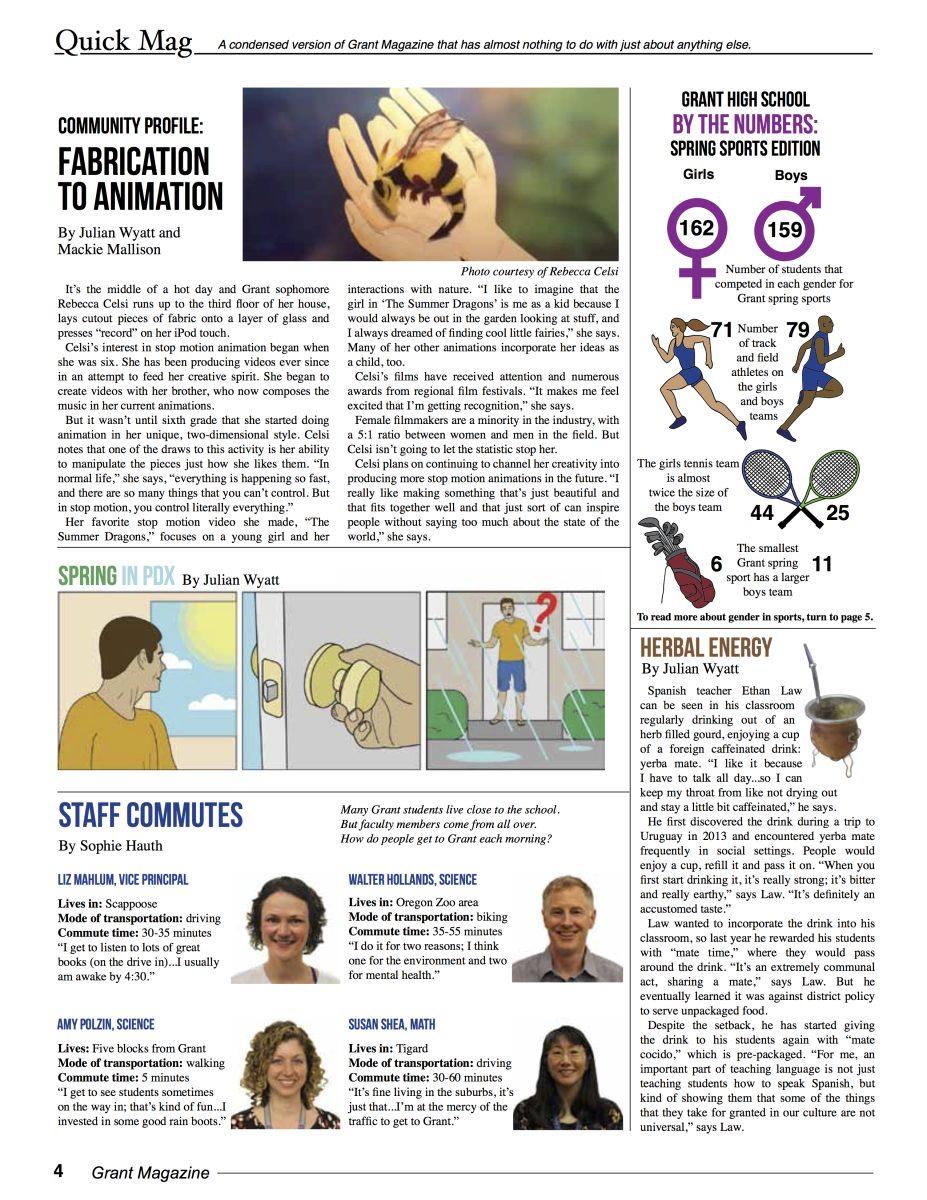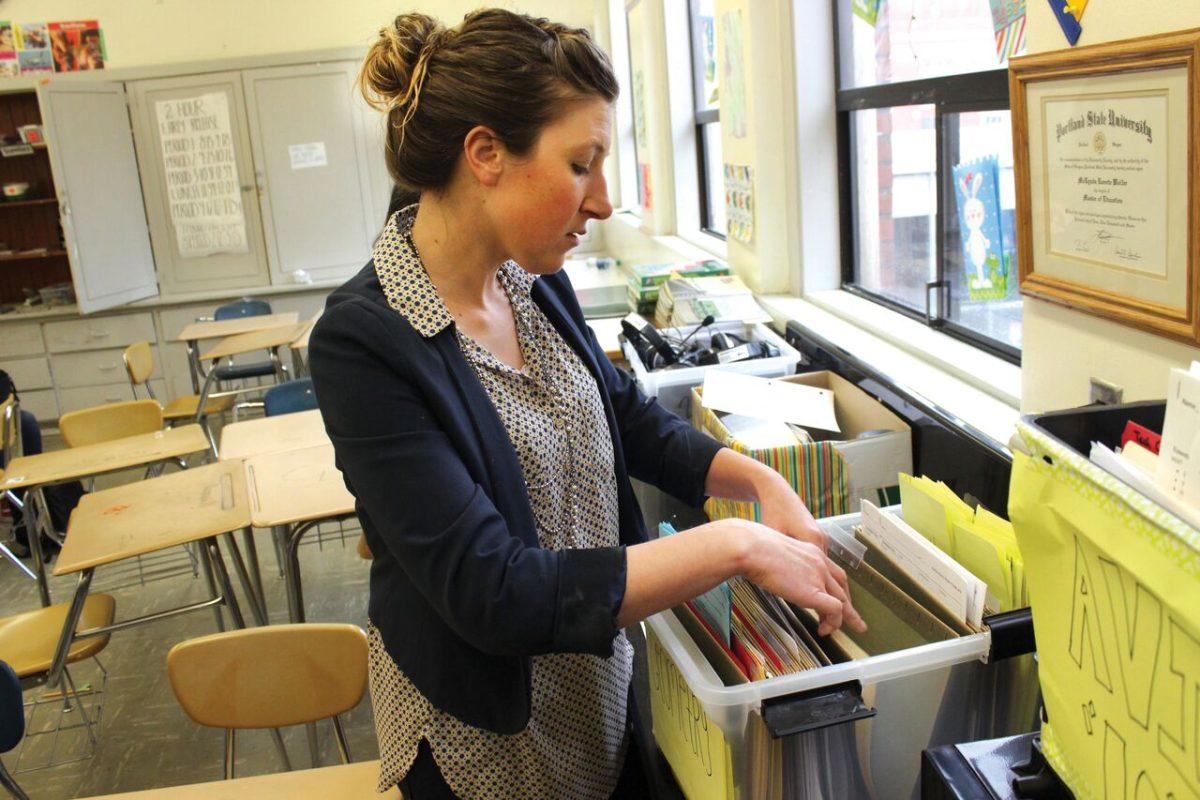 When Portland Public Schools made the decision to implement kindergarten through eighth grade schools across the district during the 2006-07 school year, many parents were up in arms.
When Portland Public Schools made the decision to implement kindergarten through eighth grade schools across the district during the 2006-07 school year, many parents were up in arms.
Then-superintendent Vicki Phillips said establishing K-8 schools would attract more neighborhood families and strengthen educational programs. The plan included shutting down some middle schools across the district, including Fernwood, which merged with Hollyrood Elementary to become Beverly Cleary K-8.
Steve Rawley, who was originally in the Jefferson cluster in North Portland, moved his wife and two children to Beaverton in an effort to avoid the changes he believed would be detrimental to his children’s education.
“The way I looked at it was they made a kind of rushed decision to switch back to K-8s,” Rawley says. “They did it in a haphazard fashion; they didn’t have a unified plan for the whole district, so neighborhoods west of the river got to keep their middle schools and (the) Cleveland cluster got to keep their middle schools, but Jefferson and Madison completely lost middle schools all together.”
Now, the district is knee-deep in plans for new boundaries, which include reverting back to the kindergarten through fifth grade elementary – with the potential exceptions of Laurelhurst, Beverly Cleary and Irvington, which will remain K-8 – and re-opening a handful of the middle schools that were previously closed down, including North Portland’s Ockley Green Middle School, this coming fall.
The primary purpose of the new boundaries is to “right-size” the classroom. Schools like Lincoln High and Beverly Clearly are overcrowded, while Jefferson High and many of the middle grades of K-8 schools see under-enrollment. With that comes a lack of educational opportunities for students because programs aren’t as extensive.
“So just because Jefferson is your neighborhood school, you can still opt out of going to Jefferson, and that’s the real travesty right there,” says Portland Public Schools teacher mentor Chrysanthius Lathan, who works with first and second-year teachers from middle schools across the district.
“That’s not serving the students that are there that may not have another option and so when you don’t have students in the building, then you don’t have dollars in the building, and that’s the whole problem.”
At school board meetings, parents and community members conveyed their weariness for the shifting boundaries and their implications.
“We really had a lot of constructive input where people were looking at the effects of things beyond their own family and their own neighborhood…and it was very useful to us,” says Portland School Board vice chair Amy Kohnstamm.
She notes the input from parents and community members has helped shape how to extend the boundary shifts beyond a small group of students, as well as implementing the changes at key transition points so as not to interrupt their schooling.
Since last year, the district’s Boundary Review Advisory Committee, established to support the community’s voice during sizable district shifts, has worked to conceptualize new boundaries that will meet the priorities of the schools and cause as little disruption as possible for students and their families.
The new changes are a rolling implementation over the next five to six years, according to committee member Neisha Saxena, who has been involved since the early stages of the planning process. But the district is already taking steps to alter the existing boundaries and structure of schools.
Some parents see this as a hasty decision on the part of the school district; for others, the shifting boundaries prove to be a potential relief of overcrowding and years of resources spread thin.
“It’s enrollment balancing,” Kohnstamm says. “We have schools that are overcrowded, we have schools that are under-enrolled and we have schools that don’t have enough students, particularly in the middle grades, in order for us to offer a good range of electives and programming.”
For example, schools like Lincoln and Grant face overcrowding, in part due to transfers, while Jefferson is seeing significant under-enrollment with only 23 percent of neighborhood students attending the school, as of the 2014-15 school year. This is compared to 88 percent enrollment at Lincoln and 82 percent at Grant.
The numbers get tricky, however, with dual enrollment and special programs, such as language immersion and Jefferson’s middle college collaboration. But Lathan recognizes the implicit factors behind the skewed numbers and disparate populations.
“If Grant is super full and Lincoln is super full and Wilson is super full and Jefferson is not, then they’re not going to get as many teachers. They’re not going to get as many resources…that’s what the real problem is – everything is a veiled way of saying, ‘I don’t want my children to go to a school with a bunch of black and brown children,’” she says.
But, some boundary committee members say it’s hard to diversify schools racially and socioeconomically when the demographics of Portland are becoming increasingly concentrated and isolated.
“Our neighborhoods are segregated… it’s hard through boundaries to make changes there. But we definitely want to end the disparities that we’ve seen in terms of access to opportunities,” says Saxena, who has a freshman son at Grant.
“I think city politics need to change because really when you look at the position of schools, what you are really looking at is the neighborhoods, and so segregation happens in schools…because segregation is happening in housing. So you have to fix that before anything is going to change with the school system,” says Chris Riser, a middle school language arts and social studies teacher at Woodlawn K-8, which is amongst the many schools that will return to K-5.
Portland’s skyrocketing real estate prices and a staggering increase in the average rent help create even more disparities. More people of color are moving to the east side suburbs to find housing. Coupled with gentrification, this fuels the racial and economic disparities.
The boundary committee is asking for help from culturally specific partners such as the Center for Intercultural Organizing, Self-Enhancement Inc. and Asian Pacific American Network of Oregon, amongst others.
Member Jason Trombley also notes the committee’s effort to stay true to many of the historical ties that some Portland communities have to their schools.
“One of the things we are being very sensitive about is the number of neighborhoods right now that have high concentrations of either low-income families or families of color, he says. “Within that, we know there are a number of…neighborhoods where there is a historic tie. As we are drawing new lines, to what extent will those outcomes be displacing families of color?”
Lathan cautions, however, that the imbalanced input among parents in these communities could potentially contribute to more disparities in opportunities come new boundaries.
“I think that there are some communities who are able to be more vocal than other communities,” Lathan says. “Communities on the west side of the river, for example, they were able to band together and get T-shirts and interrupt school board meetings and do marches and fundraise and all the rest of that stuff.
“They have the resources, they have the capital and they have the time,” she says. “They have more resources whereas schools that (have) lower socioeconomic status usually have parents who work most of the day or work most of the night, and they have limited resources and time to be able to come together as strongly as some of the schools on the west side.”
The district is taking measures to reverse the stigmas of schools – and in turn level the playing field for opportunity in curriculum – through the changes in boundaries and limiting the number of transfers. But for some, the answer isn’t necessarily found in shifting the boundaries but promoting schools and their successes equally.
“If the district is expecting to address issues of inequity through structural and technical solutions, change boundaries, force those people to go here instead of there, I think they are going to fall short,” says Filip Hristic, the principal of Roosevelt High School in North Portland.
“I think we have to look beneath the surface and try to speak to people’s perceptions. The question that I would ask is how can the district play a more active role in… schools that are feeling like they have to fight off a stigma through communication?”
In recent history, urban public schools across the United States have followed the same general idea: young children attend their neighborhood elementary school from kindergarten through fifth or sixth grade and then upon completion, go to a separate middle school.
During the 2006-07 school year, Phillips moved to implement the K-8 model throughout the east side of the PPS school district, reminiscent of Portland in the 1950s, with the intention of drawing more neighborhood families and creating stronger schools with more opportunities for students. Phillips left the district abruptly in 2007 to take a job with the Bill & Melinda Gates Foundation. But the district was stuck with what she had set up.
Similarly to recent backlash over this year’s boundaries, the shift in 2007 was deemed brash and haphazard by parents across the district, primarily those who felt their children would excel better at a comprehensive middle school with sufficient electives and teachers.
Some especially worried that schools in wealthy neighborhoods, particularly on Portland’s west side, would have an easier time raising funds for such electives and specifically trained teachers. Comparatively, the rest of the schools would have to settle for district funding, which was already spread thin.
“It definitely seems that, at times, the more affluent communities get what they want, and other communities don’t, so that’s happening all around us,” Hristic says.
Steve Rawley says: “It should be fair, and you should make sure that everybody in the district is treated the same.”
That summer, schools changed abruptly as plans to add on a grade each year were implemented.
Sam Kowitch, a sophomore at Occidental College in Los Angeles, was one of the first students to go through Laurelhurst’s middle grades. He notes many of the arguments that parents opposed to the change were acknowledged. “I don’t remember that many electives at Laurelhurst,” Kowitch says now. “I think there was an OK amount of electives, but we didn’t have woodshop or the hands-on stuff that my friends at other middle schools had that I thought was cool.”
Kowitch also admits that the transition to high school at Grant was something to get accustomed to.
The model continued for years and gained some support.
“We heard a lot from…(some parents) wanting it to stay K-8 because it’s a closer walk for their kids, and the big brothers and sisters can look after little brother and sister,” says Scott Bailey, a DBRAC member, of his initial work on the boundary committee.
Still, the population in the middle grades of K-8s dwindled, and students felt the worst of it through limited course offerings.
Newly appointed superintendent Carole Smith knew something needed to change. In 2010, boundary lines were altered around the Alameda and Sabin neighborhoods, with intentions of right-sizing the overcrowded Alameda Elementary School. However, the changes were minimal.
This time around, the district plans to have new boundaries make an impact.
At the forefront of this effort is the boundary committee. It’s comprised of parents, community members and district employees. It was officially created in November 2014, but it was preceded by a committee established under school board resolution 4718, which the board voted unanimously on, that focused on aligning both the boundary and transfer policies with the district’s racial equity policy. That policy promotes equity and equality for all Portland Public Schools students. This group eventually became the boundary committee.
The premise of the committee, Trombley says, is to “(address) the issues around the schools that we have that are currently either overcrowded or under-enrolled and really drawing the boundaries in such a way that we fix those issues and really begin to accommodate the long-term population growth of our city. We need to do some serious systemic looks at the state of our schools.”
Meeting frequently, especially during sizable shifts in school boundaries, the group focuses on the implication of certain district actions.
With right-sizing the classroom in mind, after almost a year of deliberation, the committee decided on reverting back to the K-5 and middle school option.
“In order to really have equity across the system, particularly in the middle grades, so that all kids have access to a really strong core programs and a strong range of electives and to have that adequately staffed, that was…the biggest driving factor leading to going back to middle schools across the whole district,” Kohnstamm says.
In November 2015, maps were released showing proposed changes to the district. After being published online, many parents shared their concerns, and the committee paid attention.
Gabrielle Bolívar, mother of three children in the Jefferson cluster, has strong opinions about the redistricting. Using the events of 2010 as an example, Bolívar doesn’t believe that creating hard boundaries will change the enrollment levels of a school as fast as necessary and that the boundaries will constantly be needing to change. Instead, she proposes an alternate solution.
“Portland Public Schools has historically done what’s called ‘hard boundaries,’” she says. “So moving a block here and a block there, straight here, straight there. And it hasn’t resulted in balanced enrollment in schools based on the age of kids in the section per grade. So my opinion is that we need to start looking at something called a ‘soft neighborhood’ model that would look at every kid that’s coming into the system and placing them in the closest school that has room,”
The school board has said that it will hear a presentation soon about developing this kind of system.
The committee wanted to make sure there was substantial community involvement. Through numerous outreach strategies, they tried to connect everyone affected by the changes. Focus groups, a student advisory committee, parent groups and working with the culturally specific partners helped the effort. The committee held facilitated town hall meetings using Facebook, Twitter and other social media platforms.
Parents may be involved, but they are divided. “It created a big rift in the community,” says Heather Leek, past president and current member of the Beverly Cleary PTA. She describes parent feedback as “mostly people feeling that they’re winners and losers in this, because they’re either drawn in or drawn out. There are parents that talk about how divisive it is to have this conversation, every year, for the past five years.”
Grant junior Katie Davidson, the student representative on the school board, admits that while the outreach was sufficient, there’s still room for improvement. “I think that there’s been… a lot of opportunities for student and parent (input),” she says. “But I don’t think the message has really been broadcasted over the whole entire city.
“I think that there needed to be – and there still needs to be – a discussion at every school. This is a huge thing…and we have to fix the problems that we have.”
For nearly 18 months, the committee established and voted on a plan for the west side of Portland, effectively phasing out all west K-8 schools with the exception of Skyline, which is too far from other middle schools. The new map will be implemented in the fall.
As for Grant, there’s been little change to the east side as of yet. That is the boundary committee’s next step as it begins to hold focus groups and school board meetings devoted to the conceptualization of the changes that will surely affect the Grant community.
In the early stages of planning, the committee has discussed reorganizing the boundaries so what was previously the eastern part of the Grant district will become part of the Madison cluster. That will relieve Grant of some of its overcrowding.
“The district has a plan that all high schools will be about (the same size),” says Grant principal Carol Campbell. “That means based on how people are moving around the city and where families are located and where the largest number of elementary students are located, it makes sense that you might have to make adjustments to the boundaries over time. They’re not going to stay exactly the same if we want to have this model where schools are similar in size.”
For Grant and other schools that witness overcrowding, these new boundaries are coming at a key moment.
“We’ve seen increases in enrollment in kindergarten since 2006,” Saxena says. “In 2008, we started to see increases district-wide, (with) the younger grades in particular. The enrollment started to go up, and it’s been going up every single year since (then), and it doesn’t show any signs of stopping.”
According to a report published by the district through Portland State University’s Population Research Center, and based on enrollment numbers from 2013, district enrollment will increase by approximately 400 students per year for the next 15 years. By the 2028-29 school year, that’s an estimated 53,403 students in the system.
Current boundary changes prove to be preparation for the forecasted wave of new students.
But, for some, this doesn’t ease the transition ahead of many affected by changes starting as early as this fall with the re-opening of Ockley Green Middle School.
In terms of hiring or relocating teachers to the schools that will be opening this fall, the process has already begun. According to Chris Riser, who will be moving to Ockley Green this fall, the top priority for a teaching candidate is seniority, and a close second is being able to match the demographics of the incoming students amongst the staff.
Even for teachers, however, it’s not a smooth transition. “Some of them (will move) into grade level areas where they don’t have any expertise yet,” Lathan says. “So they’re having to learn a whole new curriculum. Trying to learn a whole new set of kids and just building a school community from scratch is hard work.”
Many are ready for the process to be over.
“I’m looking forward for it to be done,” Leek says. “I don’t want any of my friends to be moved out of the school, but I’m looking forward to a little space relief and I’m looking forward to not having to have this conversation anymore because it’s just been very, very difficult for the community all the way across.”
Despite the controversy that no doubt complicates the new boundary changes, Rawley encourages parents and community members to take matters into their own hands. “Work to make sure that all of the schools have the same kind of resources,” he says. “Make sure that all students get access to the same types of programs. Rather than trying to get your house into the school that’s got the better programs, let’s make sure they all have similar programs.” ◊
Grant Magazine reporter Julian Wyatt contributed to this report.













